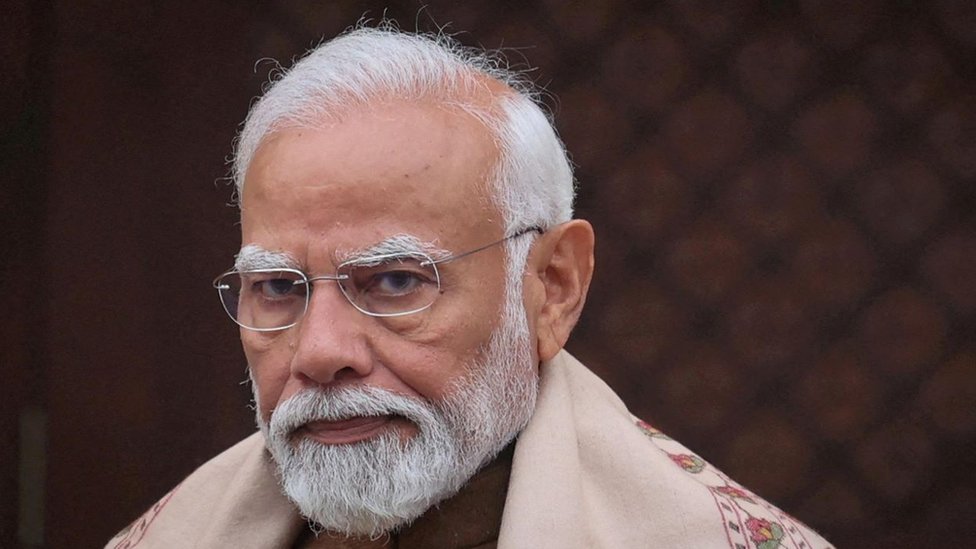Trump Imposes Steep Tariffs on India: Why New Delhi Is Holding Back from a Quick Trade Deal
Trump Imposes Steep Tariffs on India: Why New Delhi Is Holding Back from a Quick Trade Deal
By
Leah Rosenfeld
Last updated:
July 31, 2025
First Published:
August 6, 2025

Photo: BBC
U.S. Tariffs on India: The New Reality
On July 24, U.S. President Donald Trump announced a 25% tariff on imports from India, alongside an unspecified penalty. This move came amid escalating trade tensions, yet New Delhi has not rushed to finalize a trade agreement with Washington. Instead, India remains steadfast, leveraging its economic strengths and political priorities to negotiate from a position of power.
India’s Calculated Resistance
Unlike recent U.S. deals with countries like Japan — which included expanded market access for American autos and agriculture — India has been reluctant to open key sectors, especially agriculture, which directly impacts millions of farmers and constitutes a significant voting bloc.
In 2024, U.S. imports from India totaled approximately $87.4 billion, a fraction of India’s overall economy, allowing New Delhi the flexibility to resist pressure. India’s Commerce and Industry Minister Piyush Goyal emphasized safeguarding farmers' interests and small enterprises, stating that trade talks won’t be rushed by deadlines but will prioritize national interest.
Strategic Trade Alliances and Global Positioning
India recently signed a trade deal with the U.K., successfully shielding its most sensitive agricultural sectors from tariff cuts. This deal signals India’s broader strategy: to pursue multiple trade agreements that provide leverage both at the negotiation table and amid global economic uncertainty.
Sarang Shidore of the Quincy Institute described this as India’s “multi-alignment strategy,” balancing relationships across the West, BRICS nations, and emerging markets. With ongoing negotiations underway with the EU, Maldives, and others, India aims to strengthen its position without overreliance on any single partner.
A Crucial Partner in the Indo-Pacific
From a U.S. perspective, India holds strategic importance as a counterweight to China’s rising influence in global manufacturing and geopolitics. Analysts note India benefits from the “China plus one” manufacturing trend, where companies diversify supply chains to reduce dependence on China.
Economist Vishnu Varathan explains that India’s lower labor costs complement U.S. advanced manufacturing capabilities, creating a potential economic partnership that strategically sidelines China.
The BRICS Factor: Flexibility in Diplomacy
India’s active role in BRICS—a coalition including Brazil, Russia, China, and South Africa—adds complexity to U.S.-India relations. The bloc seeks to challenge Western dominance in global finance and reduce reliance on the U.S. dollar.
President Trump has threatened additional tariffs on BRICS countries, warning of consequences if they strengthen their alliance. India, however, appears to use its BRICS membership as diplomatic leverage, maintaining a delicate balance between Western ties and emerging global partnerships.
Looking Ahead: India’s Negotiation Playbook
India’s cautious approach is backed by clear “red lines,” particularly regarding genetically modified foods and dairy products, which remain off the table in trade talks. Former WTO ambassador Jayant Dasgupta noted that India’s stance is unlikely to shift significantly on these critical sectors.
Federation of Indian Chambers of Commerce & Industry president Harsha Vardhan Agarwal expressed hope that the U.S. tariffs would be temporary and that a comprehensive trade deal will eventually emerge.
A Trade Relationship in Flux
India’s refusal to hastily accept U.S. tariff demands reflects a strategic calculation aimed at protecting vital domestic interests while expanding global trade connections. As the world’s geopolitical landscape shifts, New Delhi’s balanced diplomacy and economic diversification grant it the resilience to withstand trade pressures while shaping its own path forward.
Popular articles
Subscribe to unlock premium content
Disney’s Timeless Magic and How the Entertainment Giant Continues to Shape Culture and Innovation

Imran Khan’s Economic Missteps Amid Political Chaos in Pakistan

The Philippines’ Digital Shift How Remittances and BPO Are Fueling Growth

Disney’s Timeless Magic and How the Entertainment Giant Continues to Shape Culture and Innovation

Imran Khan’s Economic Missteps Amid Political Chaos in Pakistan

Disney’s Timeless Magic and How the Entertainment Giant Continues to Shape Culture and Innovation









